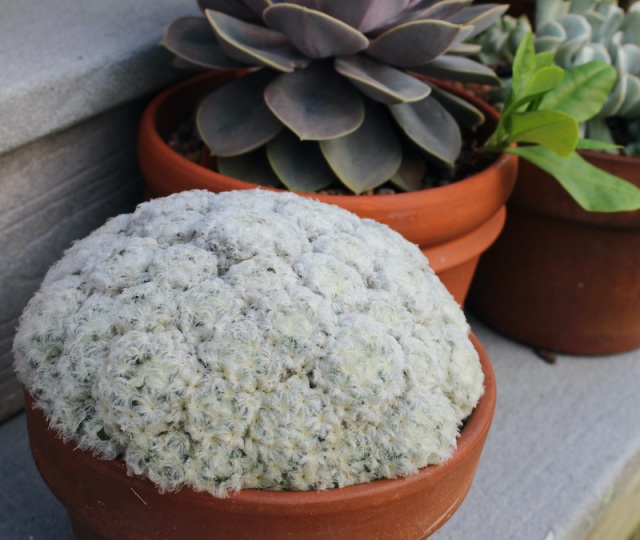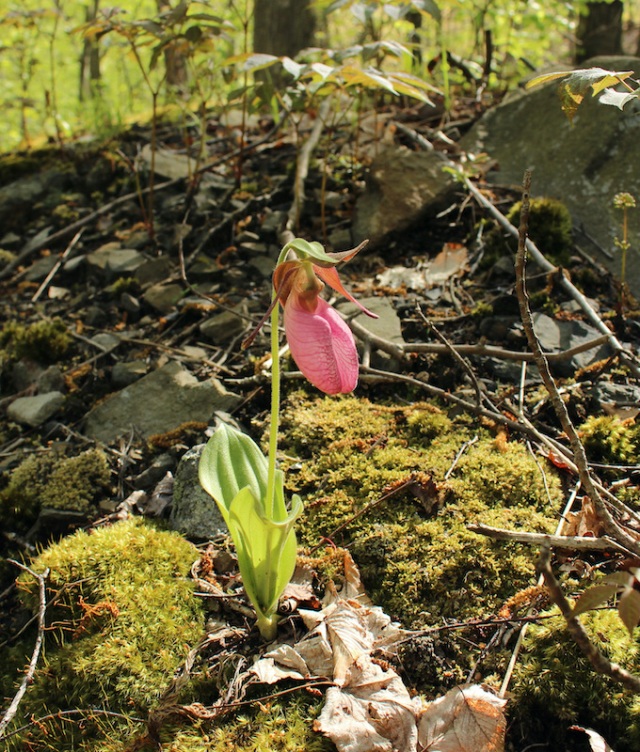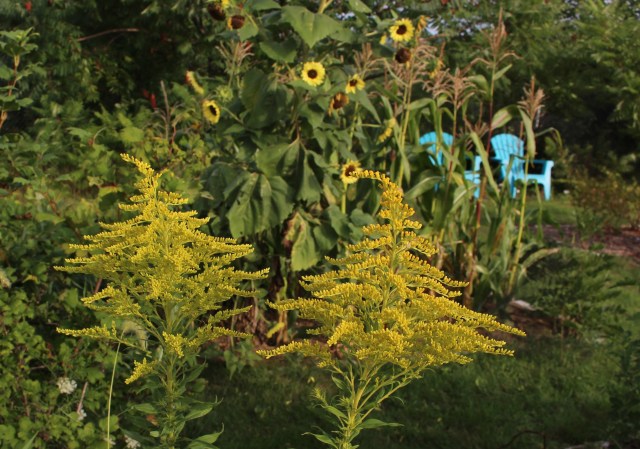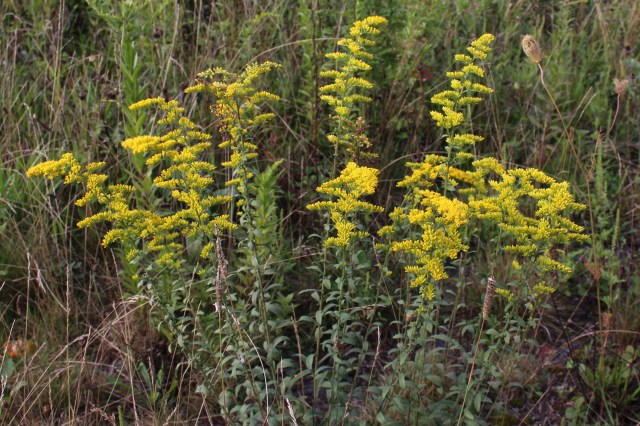It was the driest of times, it was the wettest of times, it was the age of motivation, it was the age of laziness, it was the epoch of brilliance, it was the epoch of more dumb ideas… it was just about everything and as usual you’ve got to take the good with the worse, so when the light was nice this week I got some photos, and now as rain and gray rule the day I’m posting.

The summer annuals are fading fast. Even a week of non-fall-crisp air didn’t convince them summer had returned.
Something about a tropical weather system escaping the tropics and taking a trip to Canada (which we couldn’t work in this year, so good for the storm) has us pulling in cold northern air with a swirl of tropic downpours, and I’m not thrilled to see cold and wet arrive for a holiday weekend. This comes after an overly-warm week also gave an excuse to stay inside, so as you could guess the pace of work is close to an all-time low.

The succulents are starting to migrate into the winter garden to spend the next few months under lights. It looks so innocent at first but by the time the last pots need to be crammed in here….
Other than the usual excuses I have brand new ones to add to my list, both of which caught me off guard! Last Saturday, overly enthusiastic sandwich chewing left me with a nice bite to the tongue… nice enough that I didn’t eat for two days and was barely able to speak when Monday rolled around… and then an achy knee on Sunday turned into a limp and pain which only ramped up through the week as the mouth began to get better. What a mess. Fortunately I work with a nice group of kids this year, who reassured me it’s not my fault, it’s just that I’m so old and this was bound to happen sooner than later as I pick up speed on the downhill side of life.

In July all the hanging baskets of dichondra ‘Silver Falls’ were going to be overwintered and come back even stronger for 2024. In October… well that’s a lot of baskets to overwinter…
So maybe the rain is a blessing. I can slow the pace, rest up a little, maybe help clean inside??? -hahahaha, just kidding- there are a billion things to clean up in the garage and the winter garden is starting to fill up, and today is an excellent day to sort and put away the dozens of empty pots (which will likely fill again this winter), and make sure there is ample potting soil etc for the upcoming months.

Before being sidelined for injuries, the daylily farm was tended and replanted for 2024. Sometimes it looks big, other times it just looks like a silly example of why I need adult supervision, but in either case it should look nice in bloom.
So some progress is happening as far as preparing for colder months, but I was most pleased to get the daylily farm in order. I still have this delusion people would come if I opened the garden for a weekend or two, and I also have this idea that everyone would be super-nice and just as excited about plants as the farmer is…. until I have my doubts… Then all of a sudden I’m wasting day after day wondering why no one is interested in a daylily or two, and I’m either making pity-sales to friends, or fielding ‘can you do better on the prices’ questions from someone who pulls up in an Escalade. I guess it can’t be any worse than the garage sales we used to have, where a day in the driveway maybe cleared 10 or 12 glasses or purses or whatnot out of the basement.

Whatever happens, at least this side of the house looks somewhat presentable again. New beds have been made, lawn has returned, and if you can ignore all the clutter, it almost looks garden-ish.
Even if the farm never works out, there’s still all that amazingness in the back yard. Overgrown potagers, weedy and unmulched beds, and waste areas where weeds are actively going to seed highlight the garden once you pass beyond the curb appeal of the front yard. I would swear that 90% of garden advice for maintaining a beautiful Eden of your own includes the statement ‘make sure you get your weeds before they go to seed’, and when I look around that’s all I see. “Wildflowers” going to seed, grass going to seed, perennials and annuals going to seed, it’s all a seedy mess and if it weren’t for the constant back and forth of birds and other wildlife coming in and out of the yard I’d have reached for the string trimmer weeks ago. I’ll accept the curse of future weeds in order to enjoy this. One of the few apps on my phone is the ‘Merlin Bird ID’ from Cornell Labs, and what it does is pick up the bird sounds around you and runs a list of what species are calling. Last Saturday morning I cracked open the back window and let it run for about ten minutes and it tallied up 21 different species of birds in the yard. Birds are migrating through this month, and I see them in and out of the weeds, picking up their breakfast and now I have an idea of who is all there. Just in the LBB group alone (Little Brown Birds) I have Song Sparrows, Chipping Sparrows, White-throated Sparrows, Field Sparrows, Lincoln’s Sparrows, and Swamp Sparrows. Trust me that if left to my own, I’d barely recognize one of them, and even then I would have doubts!

‘Happy Flame’ dahlia looking excellent for the shorted days and cooler temperatures. The orange marigolds are still going strong!

The afternoon light on ‘Limelight’ is always a treat, especially this year when ample rain and cooler weather have brought on a pink flush rather than the usual end of summer tan.
Obviously I’m a few weeks too late in doing anything about the weeds, and that was never the plan anyway, but there are still plenty of other things to keep in mind. If my knee and the weather cooperates, there are still a few colchicums in need of moving so that’s always a fun little project. The colchicum have been nice this year, and I’m glad their flowers have brought me through the doldrums of September into the season of fall foliage and chrysanthemums.
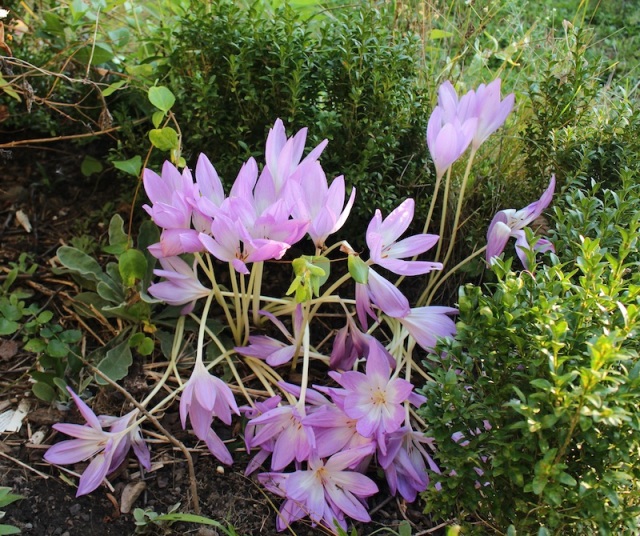
A bunch of colchicum, an un-named kind from a friend which I call ‘Frau Becker’ because that’s a much better story than calling them ‘Probably The Giant’.
The colchicums are still holding their own and a few of the fall snowdrops are beginning to peek out. As would be expected, the most promising one, even though it’s a half cm sprout in the middle of a thicket inside a jungle, has been found, singled out and nipped off by a bunny or bird. I would complain, but after years of this I’d be a little self conscious when the same people politely offer the same good advice of covering the sprouts when I first see them… so instead let’s just visit the waste area of the garden again.

The waste area from the side where its weediness shows off best. More ‘Hopi Red Dye’ and a plethora of lambs quarters going to seed. The birds love the lambs quarters but I always see it and think back to my allergy tests and how this weed showed up as a top culprit. Hmmm. Maybe not the wisest thing to leave…
Regardless of what is happening with the hard-core weeds, the verbena bonariensis taking over the lawn is still on the list of too-pretty to say a single bad thing about. I was hoping this would pull in hordes of migrating Monarch butterflies as they pass through on their way to Mexico, but so far it’s only been dribs and drabs. On a few occasions there have been three or four, but sadly never the dozens of years past.

A green nicotina is also a welcome weed. This flower is the favorite of any hummingbirds which happen to pass through on their way South.
I’ll leave off on the October project. Assuming my students are wrong and my injuries aren’t really the beginning of the end, the next thing on my Summer of Labor list will be a return to earth-moving. There’s still a mound of excavated rock and dirt behind the new addition, and surprisingly the plan has always been to tackle this in October/November once the weather cools and the ground is wet and soft again. Also surprising was a special treat which showed up and will hopefully make the job much more enjoyable. Here’s the background to that…
What do you want for Christmas? “a new wheelbarrow but I guess these new work slacks are nice too”
What do you want for your birthday? “a new wheelbarrow but I guess all these socks and a sweater are nice too”
What do you want for Father’s day? “a new wheelbarrow but I guess going out to the restaurant the kids love is nice too”
Random weekend when a hardware store closes? “A new wheelbarrow!!? How did you know!?”

A waste area in the middle of the back yard? I guess it isn’t the most aesthetic development of this spot, but I have enjoyed the progression of weedy flowers which have moved in. Right now frost asters dominate with a forest of white, and I’ll feel slightly guilty ripping them out to level the area again.
Even in my decrepit state I am still a rich man.
Have a great weekend!





